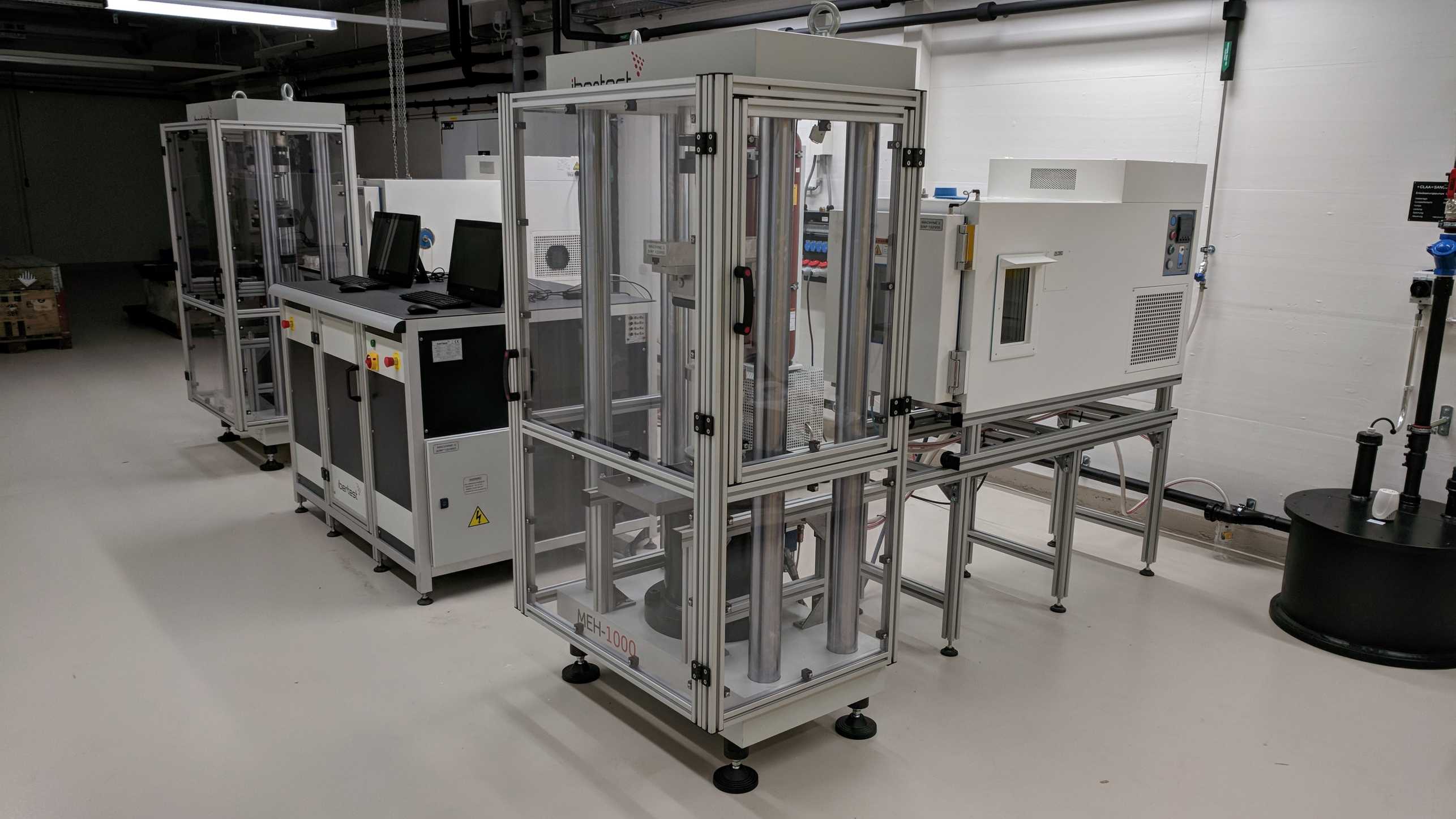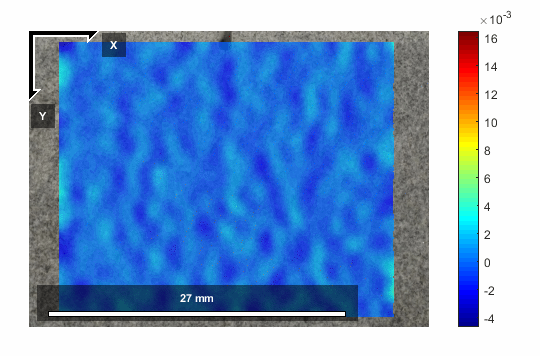Creep
Long-term rock creep testing frames with integrated climate chambers
The dual climate controlled rock creep testing frames in the Rock Physics and Mechanics Laboratory are a unique facility. Designed and constructed in collaboration with S.A.E IBERTEST in Madrid, Spain, the loading frames are designed to undertake common ‘short-term’ rock mechanical tests to a number of International standards, as well as ‘long-term’ creep tests with a combination of load or displacement control for up to 100 days. The machines can be configured to accept unconfined compression samples up to 150 mm diameter, and prismatic three-point-bending specimens up to 400 mm in length. Interchangeable 1000 kN and 100 kN load cells provide the versatility to achieve ultra-stable load control to 0.01% of the full scale, while displacement can be regulated to ±0.001 mm of the target value.

The removable climate chambers allow us to regulate temperature and humidity throughout a test period. Temperatures can be controlled from -20 to +150 °C (± 0.1 °C), while relative humidity can be controlled from 20% to 90% (± 2.5%). The maximum heating or cooling rates are 20 ° C / h, allowing to replicate normal daily thermal cycles. Each chamber is equipped with a fan to ensure consistent conditions throughout the chamber, and a through-port to introduce fluids, or sample gasses. Large optical viewing ports are located on the front, and side of each chamber.
Surface strains can be tracked using a range of extensometry products from Epsilon Group. These include a radial chain extensometer, four-point averaging longitudinal extensometer, and crack mouth opening displacement sensors. In addition, a 40 Mpx digital camera can be mounted on the frames to undertake digital image correlation at a resolution of 0.01 mm/px. Passive and active seismic observations can be used to study the evolution of internal damage and cracking processes. ‘Passive’ seismic signals, otherwise termed ‘Acoustic Emissions’ arise from dynamic cracking events within specimens in response to applied loads. Some internal changes do not produce detectable seismic emissions. In this case, monitoring of seismic signals generated by ‘active’ sources can provide information on changes in elasticity, stress, and internal damage. The details of the acquisition system are as follows:
Elsys AG (Switzerland) Data Acquisition Instrument TraNET EPC with 32 channels
Sampling rate up to 240 MS/s per channel
14-bit and 16-bit vertical resolution
16 wide-band AE sensors with flat frequency response from 10KHz to 2MHz
8 resonant sensors
Absolutely calibrated sensors
Continuous AE monitoring, no data loss
Active Seismic & Coda Wave Interferometry
